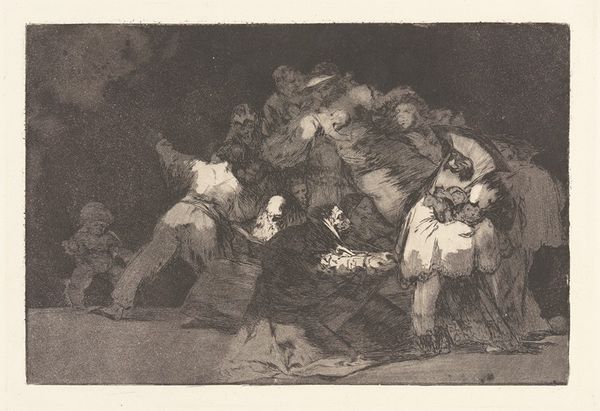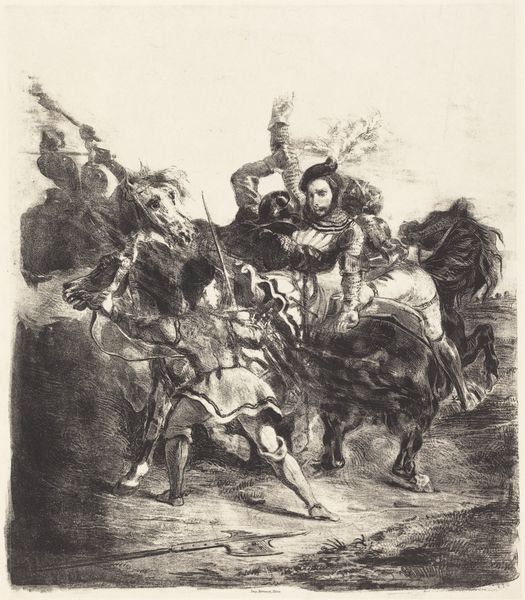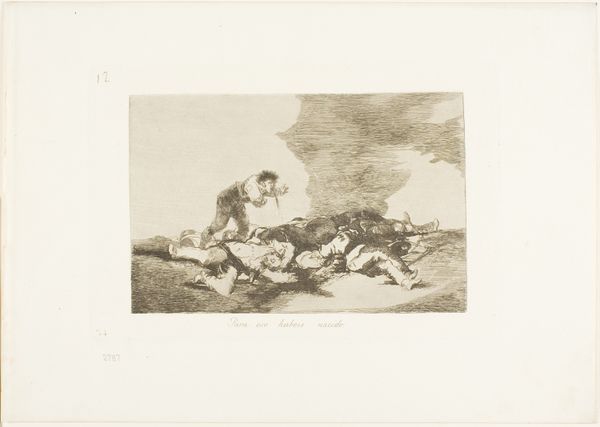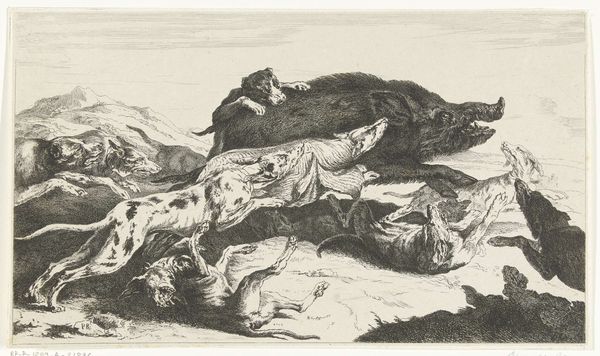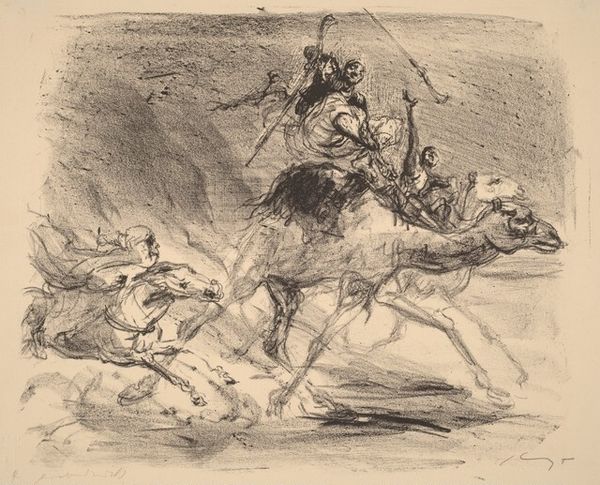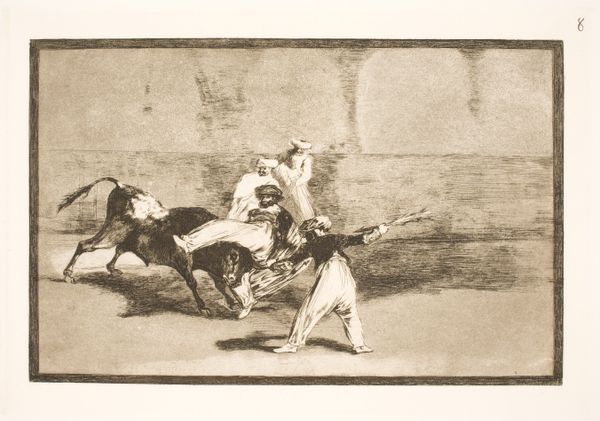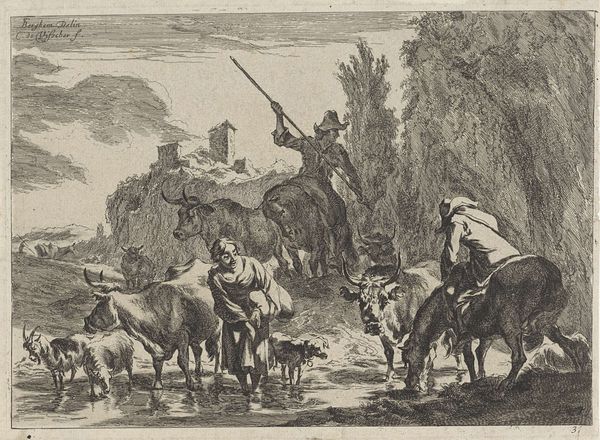
#
childish illustration
#
pen illustration
#
old engraving style
#
cartoon sketch
#
personal sketchbook
#
ink drawing experimentation
#
pen-ink sketch
#
sketchbook drawing
#
watercolour illustration
#
cartoon carciture
Copyright: Public domain
This print of Faust was made by Eugène Delacroix using lithography, a process that democratized image-making in the 19th century. The grainy texture comes from the artist drawing on a limestone slab with a greasy crayon, then treating the stone so that ink adheres only to the drawn areas. It's a direct process, like drawing, but the editioning potential allowed for wider distribution. Delacroix's image has a raw, energetic quality perfectly suited to the story of Faust. Look closely and you can see the hand of the artist at work. The stark contrasts of light and shadow contribute to the sense of drama and turmoil. These prints would have brought Goethe's story to a wider audience, beyond those who could afford paintings or illustrated books. The lithographic print, in its reproducibility, embodies the spirit of modern enterprise that Goethe was critiquing in the first place. It reminds us that art is always embedded in its means of production and consumption.
Comments
No comments
Be the first to comment and join the conversation on the ultimate creative platform.

